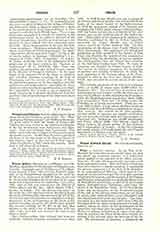

Prince Albert, Diocese of, a suffragan see of St. Boniface, Manitoba, in the Province of Saskatchewan, Canada. Originally part of the Diocese of St. Albert, it was formed, June 4, 1891, into the Vicariate Apostolic of the Saskatchewan, bounded in the south by 52° 30′ N. lat., in the west by 109° W. long., in the east by the present boundaries of the province of the same name, and in the north by the Arctic Sea. On December 2, 1907, most of this was erected into the Diocese of Prince Albert, and Rt. Rev. Albert Pascal, O.M.I., became its bishop. The new diocese is bounded on the south by a line passing between the thirtieth and the thirty-first township, approximately 51° 30′ N. lat. Its western and eastern limits are coincident with the boundaries of the civil province as far north as the sixtieth township (about 54° 20′) in the west, and the fifty-second township (or 53° 30′) in the east, thus forming in the north a line of demarcation with two right angles just half way between its eastern and western limits.
Fort Carlton within that territory had been periodically visited by Catholic missionaries ever since1842. In 1870 Father Moulin was put in charge of the French half-breed families who had settled on the banks of the south branch of the Saskatchewan. In 1874 the permanent mission of St. Laurent was established by Father Andre, who was replaced in November, 1877, by Father Lestanc, the real founder of that missionary post on the south branch of the Saskatchewan. Then followed the missions of St. Anthony, at Batoche, established in 1881 by Father Vegreville, succeeded by Father Moulin, and of Prince Albert, started by Father Andre in 1882. The first missionaries of the diocese were French Oblates of Mary Immaculate. The uprising of the dissatisfied population in 1885 resulted in the battles of Fish Creek and Batoche, the murder of two missionaries by Plains Crees, the destruction of several missionary establishments, and the capture and execution of the half-breed leader, Louis Riel. St. Louis de Langevin was founded by Father Lecocq in 1886. The advent of railways prompted the foundation of parishes and farming settlements, of which the most important is the German colony of St. Peter, founded in 1903 by the Very Rev. Bruno Doerfier, O.S.B., now attended by several priests of the same order.
The Catholic population of the diocese is estimated (1911) at 45,000, of whom some 15,000 follow the Ruthenian Rite. The French have 18 parishes, with resident priests, and number 11,050; the Germans are between 10,500 and 11,000, distributed in 12 parishes; while the English-speaking population, about 3100, have 4 parishes of their own. In other centers the Catholics are of mixed nationalities. There are also some 1000 Catholic Crees, whose spiritual needs are attended to by French Oblates established on, or near, their reserves. The schools of all these parishes, whether public or separate, are equally satisfactory but not up to the Catholic ideal (see Province of Saskatchewan). Saskatoon has 15,000 inhabitants, and Prince Albert, 8000. The diocese counts 28 Oblate fathers, 22 secular priests, 14 Benedictines, and 6 communities of women. It has 42 academies and parish schools, 2 Catholic hospitals, and 2 boarding-schools for Indians with 130 pupils.
A. G. MORICE

